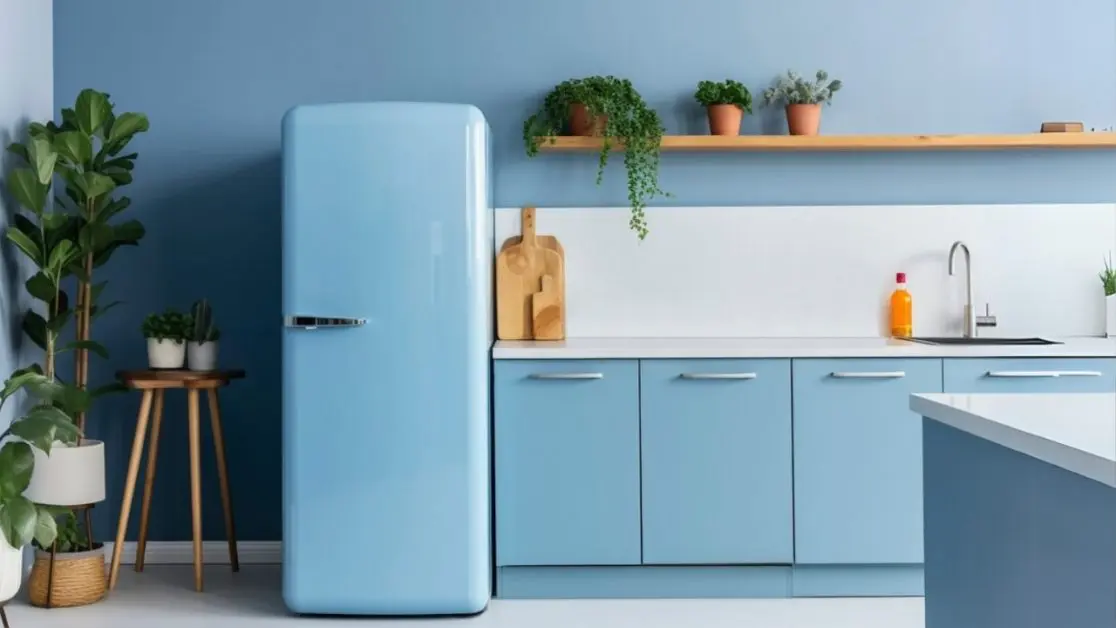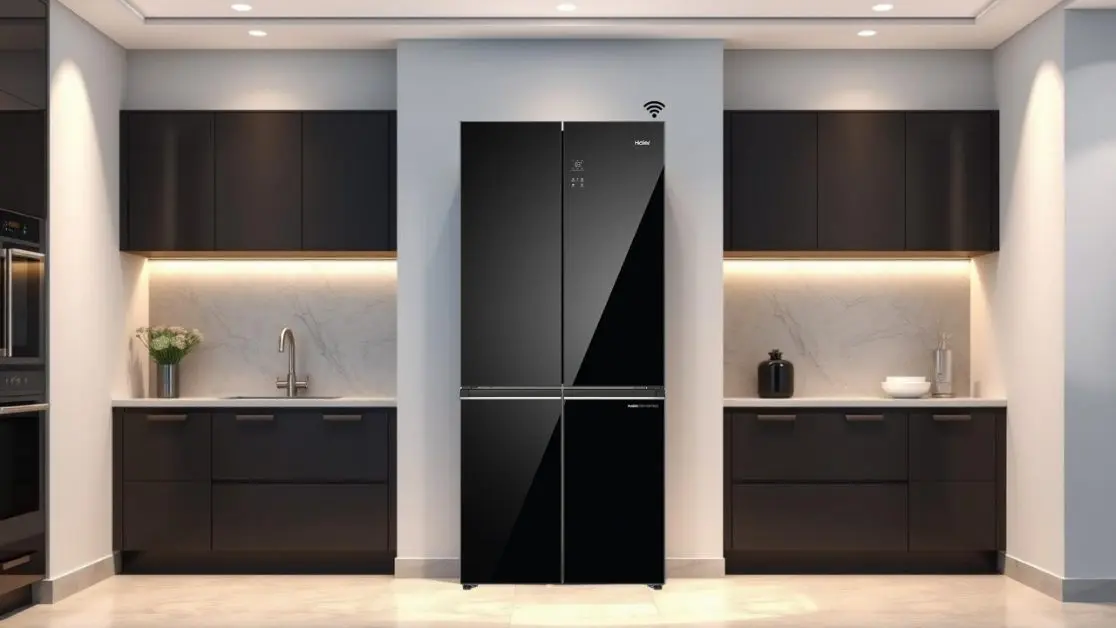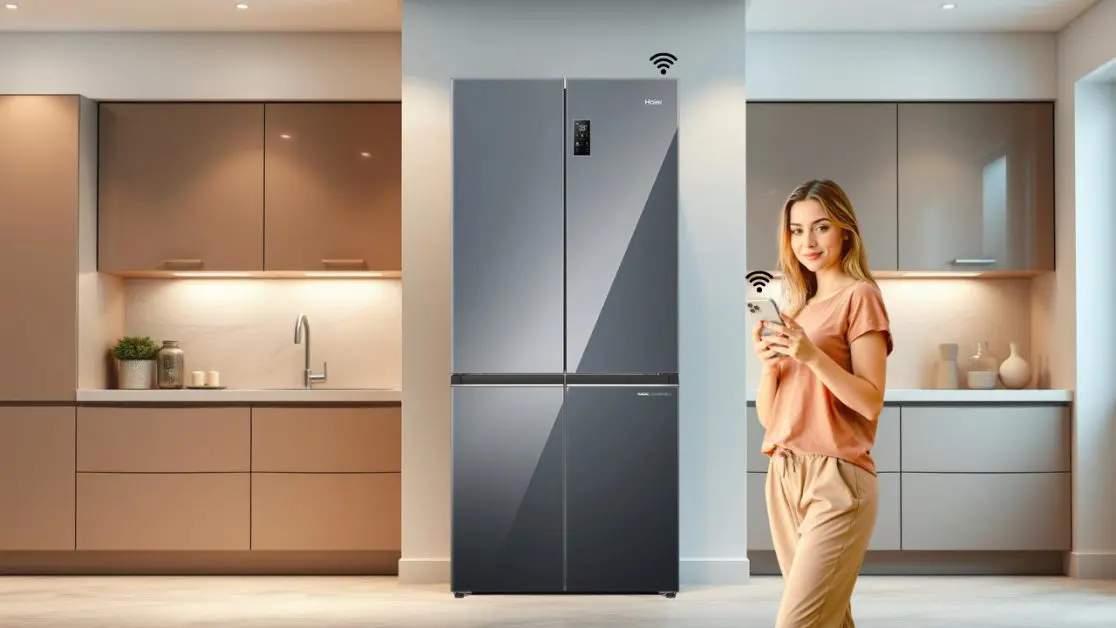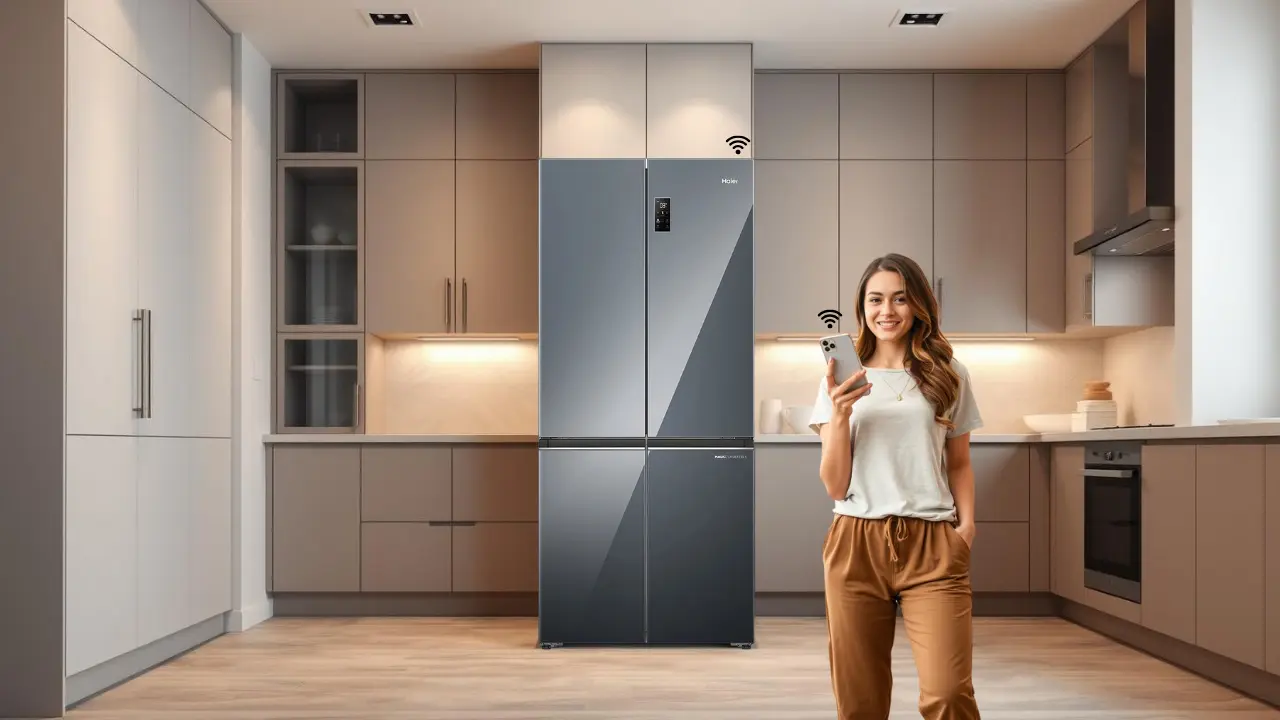Wondering how we went from simple ice boxes to the sleek, smart fridges we see today? It’s a wild ride!
Seriously, think about it. For decades, fridges were just about keeping things cold. But then, technology stepped in, and things got really interesting.
We started seeing features designed to make our lives easier, beyond just preventing spoilage. We’re talking about things like better organization, smarter temperature control, and even ways to keep track of what’s inside.
A 4-door refrigerator, for example, gives you customizable storage, precise temperature zones, and even lets you peek inside from your phone!
It’s not just an appliance; it’s a kitchen assistant. Who wouldn’t want that kind of convenience and control?
In this article we are going to discuss how we went from a normal refrigerator to smart 4 door refrigerators! So Let’s get started!
The Dawn of Refrigeration: Early Innovations

Iceboxes and Early Refrigerators
Before modern refrigeration, iceboxes were the only available food preservation system. These early refrigerators consisted of wooden cabinets with metal linings where users stored large blocks of ice that required continuous replenishment. While effective, this method was inconvenient and made temperature regulation difficult.
In the early 20th century, mechanical refrigeration systems emerged, bringing an end to ice delivery services. Initially, refrigerators were only found in wealthy households due to their high cost. However, mass production made these appliances more accessible, completely transforming food storage and preservation.
The Rise of the Single-Door Refrigerator
During the mid-20th century, single-door refrigerators became a major innovation in household appliances. These models offered superior temperature management, increased storage space, and required less maintenance than iceboxes. Their affordability and efficiency made them a household staple, paving the way for further advancements.
The Two-Door Revolution: Freezer on Top/Bottom

Advancements in refrigeration technology led to the introduction of two-door units, which separated fresh and frozen food storage. This design improved organization and extended the shelf life of stored food.
The classic top-freezer design gained popularity due to its affordability and energy efficiency.
Conversely, bottom-freezer refrigerators became increasingly preferred, as they positioned fresh food at eye level for easy accessibility.
Design and Functional Advancements
Manufacturers focused on optimizing space and enhancing user-friendly designs.
Modern refrigerator storage innovations include adjustable shelves, crisper drawers, and door bins, allowing users to personalize their storage compartments. The evolution of kitchen designs necessitated refrigerators that catered to diverse user needs.
Energy Efficiency and Sustainability
Growing environmental concerns led to advanced refrigeration technologies aimed at reducing energy consumption. Innovations such as improved insulation, inverter compressors, and eco-friendly refrigerants contributed to more sustainable and cost-effective appliances. Regulatory standards played a crucial role in shaping energy-efficient designs.
The Rise of the Side-by-Side Refrigerator
Side-by-side refrigerators gained popularity due to their equal accessibility to fresh and frozen food. Their sleek, modern design and spacious storage—including built-in water dispensers—made them a preferred choice for contemporary households. However, their narrow shelf width made them less efficient for storing wide food containers.
The Era of the 4-Door Refrigerator: A New Standard

Refrigerator design reached a new milestone with the introduction of the 4-door model, offering innovative storage solutions and enhanced convenience. These models feature adjustable storage spaces, precise temperature control, and advanced design elements.
Key Design Elements
- The fresh food section remains separate from frozen and specialty compartments.
- Dual evaporator systems maintain optimal humidity, extending food freshness.
- Flexible Storage: Customizable drawers with adjustable temperatures for different food categories.
Modern families, professional chefs, and frequent entertainers find 4-door refrigerators highly suitable. Their premium features enhance their appeal, making them a popular choice among high-end kitchen owners.
Haier 520L Black Glass 4-Door Convertible Refrigerator
Key Features
- The Lumiere 4-Door Refrigerator provides 520 liters of total capacity, with 85% allocated to fridge storage.
- A dedicated 440-liter section accommodates large quantities of fresh produce and beverages.
- The 90-liter convertible section allows users to customize storage for additional fridge or freezer space as needed.
- Deo Fresh Technology absorbs contaminants, preserving food freshness.
- Toughened Glass Shelves provide three durable, spill-proof shelves capable of holding heavy Indian kitchen utensils.
- The Haismart App enables users to control the refrigerator remotely.
- Smart Food Management allows inventory tracking, shopping list creation, and shared access among family members.
- Smart Sense AI reduces energy consumption by detecting usage patterns and automatically adjusting temperature settings.
The Smart Refrigerator: Integration and Innovation

Introduction to Smart Technology
Refrigerators underwent a significant transformation with the introduction of smart home technology. WiFi connectivity, touchscreen interfaces, and interior cameras revolutionized kitchen appliance functionality.
Key Smart Features
- Remote temperature control via smartphone apps.
- Inventory Management: Tracks food expiration dates and generates shopping lists.
- Integration with AI systems enables voice-command operation.
The Future of Smart Refrigerators
Future advancements in AI and IoT will further enhance refrigerator functionality. The next phase of refrigeration technology will focus on three key features:
- Personalized food guidance for better nutrition tracking.
- Automated grocery replenishment for seamless shopping.
- Enhanced home connectivity with integrated smart home systems.
Privacy and Security Concerns
While smart refrigerators enhance user convenience, they also raise concerns about data privacy and security. Manufacturers are incorporating advanced encryption and user control settings to address these issues.
Ending Thoughts!
The evolution of refrigerator design has been driven by technological advancements and shifting consumer preferences. From iceboxes to smart 4-door models, refrigeration has become an indispensable part of modern kitchens. Future innovations will further integrate refrigerators into smart home ecosystems, enhancing efficiency and connectivity.
Haier India continues to introduce cutting-edge refrigerator models that prioritize convenience, efficiency, and sustainability. Upgrade your kitchen with the latest home appliance technology from Haier India to experience the best in refrigeration.

